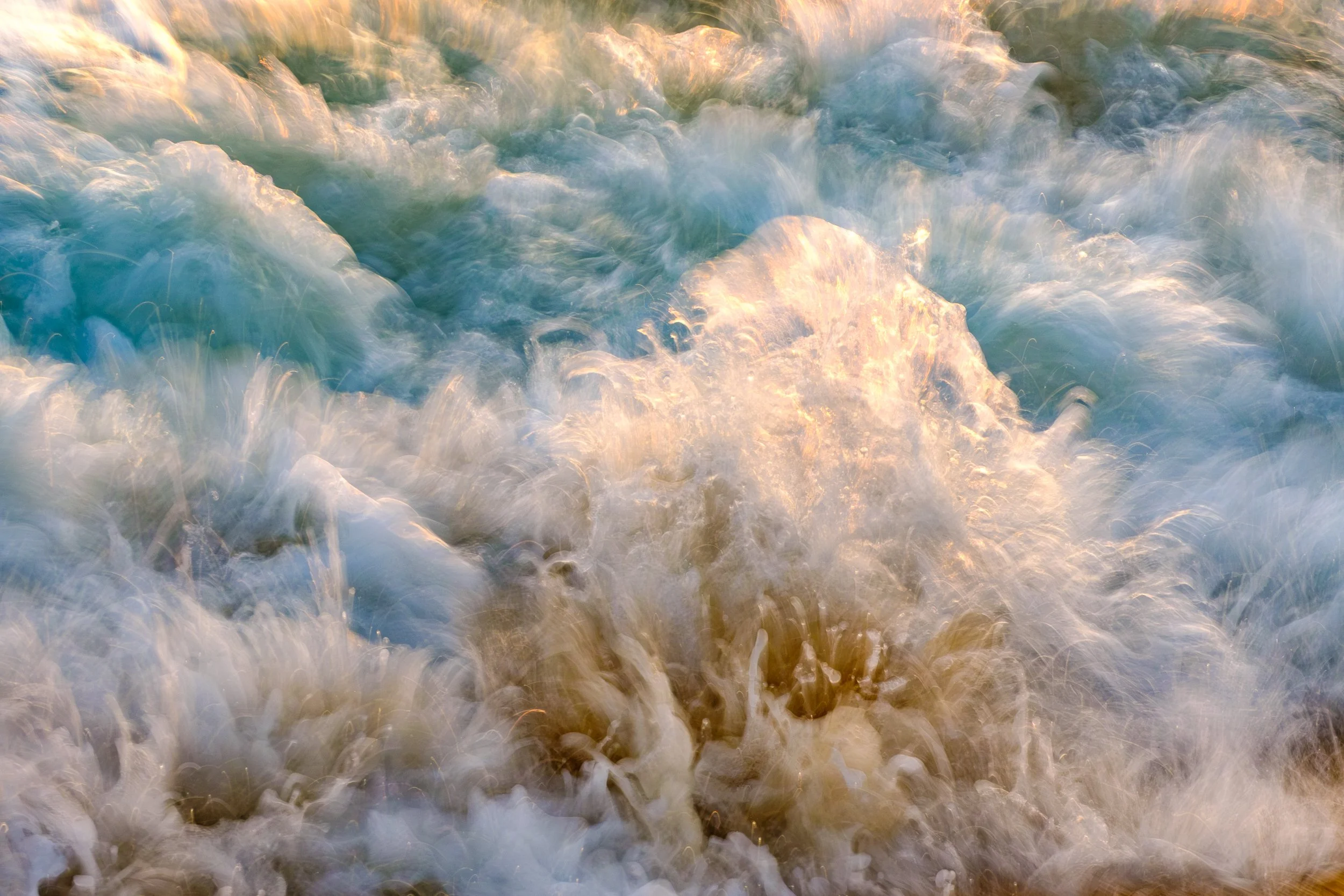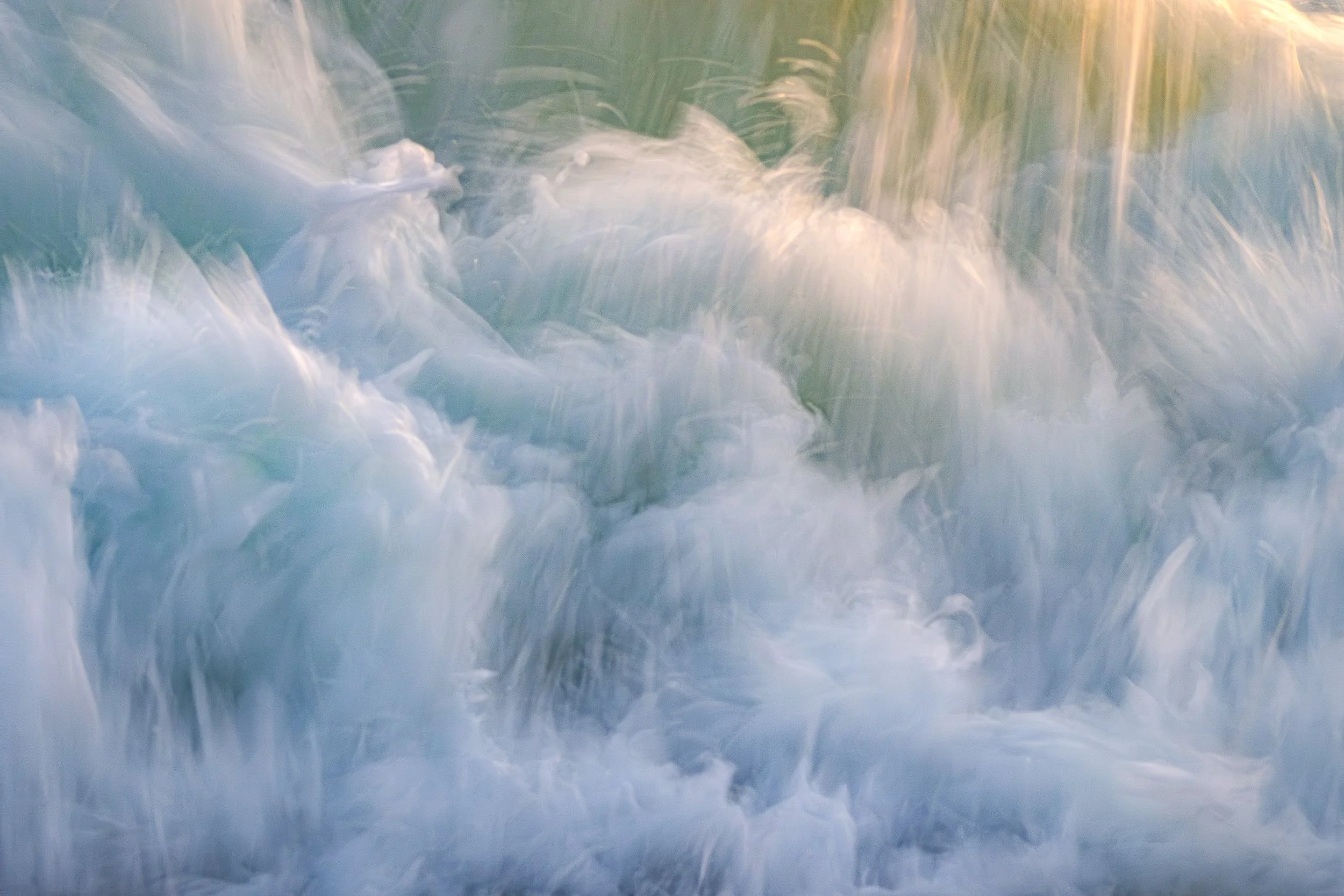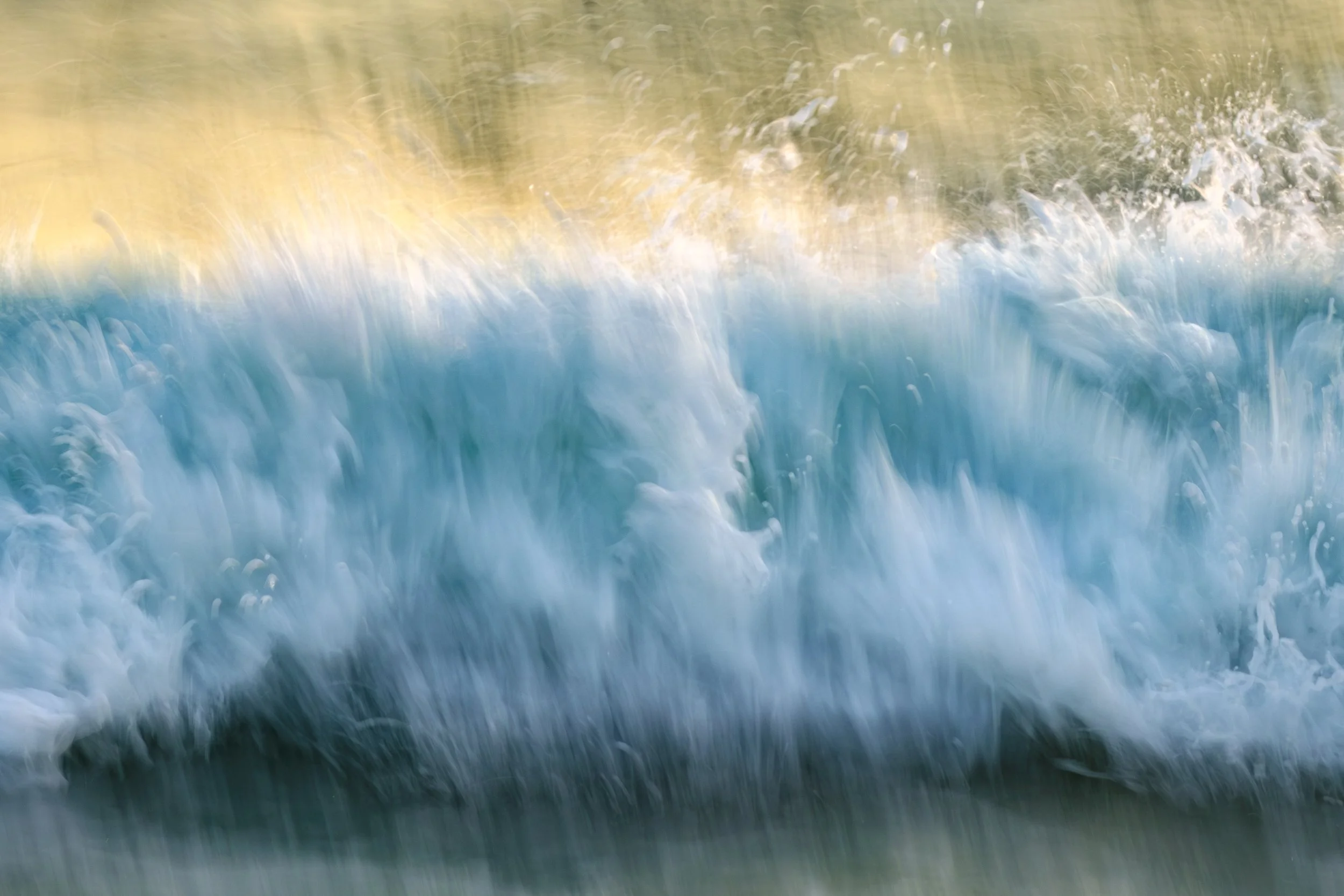Embracing Chaos
There's something liberating about photographing the sea in a non-obvious way and not looking for the perfect composition. When we photograph waves in an intangible way, we let go of the need to freeze an action, that moment we so often chase in photography. Instead, we embrace chaos.
By observing the sea in this way, we set out to explore textures, colours, movements and shapes that supplant the literal representation of what we are seeing. For this particular object, we do not seek to show the sea as it is, but rather to capture its essence through visual excerpts that can be everything and nothing at the same time. A slower shutter speed transforms the surf into something distant from reality. An intentional movement of the camera during exposure creates fluid lines that suggest perpetual motion.
The fascinating thing about this approach is that each image becomes a fictional representation of our own interpretations. Where some see momentum and storm, others find balance and fluidity. The same photograph can evoke childhood memories in one person and arouse anxiety in another. This subjectivity is not a limitation, but quite the opposite: it is precisely the power of abstraction.
We also free ourselves from technical conventions. There are no crooked horizons that need to be corrected, nor composition dogmas to follow religiously. What is out of focus is no longer a mistake but becomes a complement.
Each image becomes almost a dialogue between the photographer and the water, mediated by the unexpected and experimentation. Strictly speaking, you never know what the final result will be, but this uncertainty is a fundamental part of the creative process. We learn to trust our instincts, to react to the movement of the water.
At the end of the day, these images remind us that not every photograph needs to tell an obvious story. Sometimes, the most meaningful thing is to suggest, to hint, leaving room for each person to complete the narrative with their own emotions and experiences.
Há qualquer coisa de libertador em fotografar o mar de forma não óbvia e deixar de procurar a composição perfeita. Quando fotografamos as ondas de forma impalpável, abandonamos a necessidade de congelar uma ação, aquele momento que tantas vezes perseguimos na fotografia. Em vez disso, abraçamos o caos.
Ao observarmos o mar desta forma, propomo-nos o caminho de explorar texturas, cores, movimentos e formas que suplantam a representação literal do que estamos a ver. Para este objeto em concreto, não procuramos mostrar o mar como ele é, mas sim capturar a sua essência através de trechos visuais que podem ser tudo e nada ao mesmo tempo. Uma velocidade de obturação mais lenta transforma a rebentação em algo distante da realidade. Um movimento intencional da câmara durante a exposição cria linhas fluidas que sugerem movimento perpétuo.
O fascinante desta abordagem é que cada imagem se torna uma representação ficcional das nossas próprias interpretações. Onde uns veem ímpeto e tempestade, outros encontram equilíbrio e fluidez. A mesma fotografia pode evocar memórias de infância numa pessoa e despertar ansiedade noutra. Esta subjetividade não é uma limitação, mas exatamente o contrário: é precisamente o poder da abstração.
Libertamo-nos também das convenções técnicas. Não há horizontes tortos que têm de ser corrigidos, nem dogmas da composição para seguir religiosamente. O que se encontra fora de foco deixa de ser um erro para se tornar num complemento.
Cada imagem torna-se quase que num diálogo entre quem fotografa e o mar, arbitrado pelo imprevisto e pela experimentação. Em bom rigor, nunca se sabe qual o resultado final, mas essa incerteza é parte fundamental do processo criativo. Aprendemos a confiar no instinto, a reagir ao movimento da água.
Ao fim do dia, estas imagens recordam-nos que nem toda a fotografia precisa de contar uma história óbvia. Por vezes, o mais significativo é sugerir, insinuar, deixando espaço para que cada um complete a narrativa com as suas próprias emoções e experiências.




